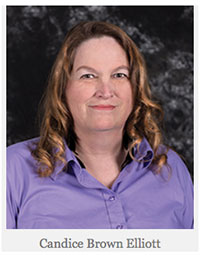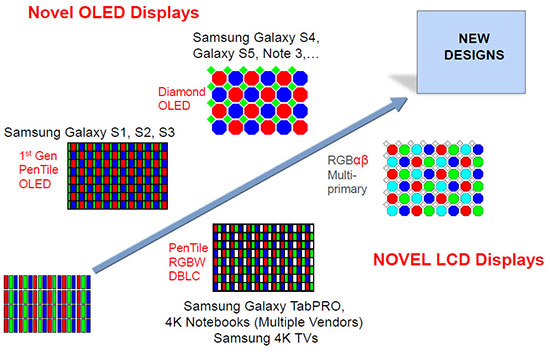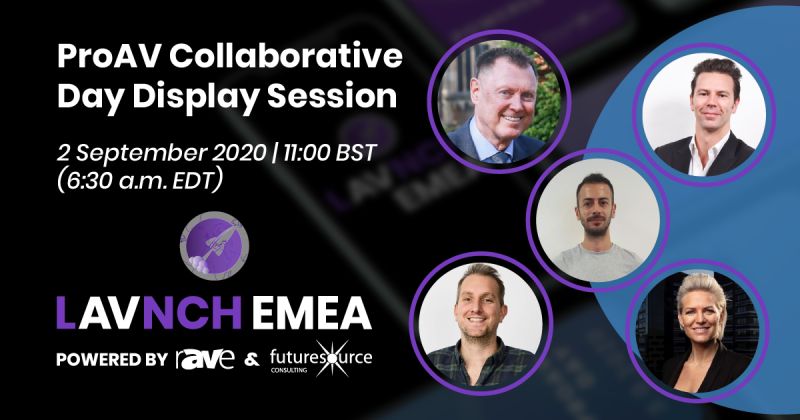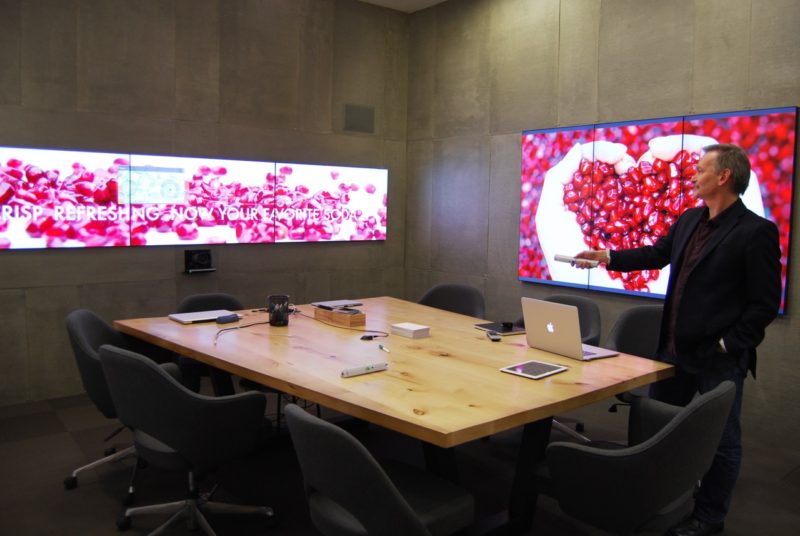A Vision of Future Displays
 Wouldn’t you like to know what display technology will look like in 10-15 years? Well according to one visionary, the future of displays, and image for that matter, is light field technology.
Wouldn’t you like to know what display technology will look like in 10-15 years? Well according to one visionary, the future of displays, and image for that matter, is light field technology.
Prognosticating this future is none other than Candice Brown Elliott, the inventor of the PenTile matrix and a host of IP related to sub-pixel rendering, display architectures and image processing algorithms. In a recent conversation, we had a chance to talk to her about her past, present and future, as she and her development team are now at a transition point with the expiration of their third two-year development contract from Samsung Electronics. This is a rare opportunity to gather up a display development team t hat has skill sets that can put a company on the map in a significant way.
To understand how strong this team is, let’s provide a little history on what they have done. Back in 1992, Brown Elliott was working at Planar Systems, one of the leaders in electroluminescent monochrome displays. New color prototypes were being developed, but these would require three times the drivers and other electronics for the red, green and blue sub-pixels. With a background in vision science, Brown Elliott wondered if you could create pixels that did not use the conventional RGB sub-pixel approach. As a result, she developed a red-green pixel and the algorithms to map conventional RGB data to it that offered a less complex way to create a color pixel. The concept worked, but the resolution and pixel density of the displays at that time did not create a compelling demo, so the idea was mothballed.
In 1998, Microsoft came out with ClearType two weeks after fundamental patents around sub-pixel rendering from IBM came into the public domain. ClearType created a noticeable improvement in the clarity of letters and validated the concept of sub-pixel rendering for display devices.
Soon thereafter, Brown Elliott began working again on her sub-pixel rendering ideas. In 2000, she raised VC funds and formed a company called Clairvoyante. A joint venture with Samsung was quickly formed with Clairvoyante doing the display architecture and algorithm development and Samsung building the display prototypes. Dozens of display patterns with different arrangements of red, green, blue and white sub-pixels were proposed with basic algorithms for doing the sub-pixel rendering. After a winnowing process, the first demos of this new technology were publicly shown at SID Display Week 2002.
Developments with various Samsung groups continued, as well as with other display companies. Samsung took the lead with a focus on OLED mobile displays where the PenTile architecture made its commercial debut in a mobile handset. By 2008, Samsung decided they wanted to own this technology by purchasing Clairvoyante. But the development company was a bit of a square peg in the round hole of the Samsung empire, so it was decided that Brown Elliott would form a new company called Nouvoyance. This company would hire the same development team and would be given a two-year development contract to manage the transition process and develop a roadmap for subpixel rendering into the future.
This worked out so well that a second two-year contract was awarded in 2010 to evaluate and integrate the Genoa Color multi-primary color technology developed by this Israeli company.
This was so successful, that Samsung awarded a third two-year development contract to focus on next generation sub-pixel rendering for mobile handsets. This resulted in the so-called “green display” technology branded by Samsung that uses two sub-pixels to create a color pixel. Notice that it took 20 years for this initial idea to become a reality as the pixel density now enabled this to be acceptable.
The chart below shows some of the commercially implemented designs in OLED and LCD.

Subpixel rendering is now in millions of Samsung products and is widely accepted in the market place as a valid alternative to the brute force RGB stripe architecture. This is a rare case of a truly successful display development story. See the list below.
- Digital Camera: Samsung NX10
- Smart phones: Google’s Nexus One, Nexus 2, and Nexus Prime, Samsung’s Galaxy S3, S4 & S5, Motorola’s Atrix, Bionic, Photon
- Tablets: Samsung Note and Tab Pro, Toshiba’s Excite Pro and Excite Write
- Notebooks: Samsung Ativ Book 9, Lenovo Yoga 2, HP ENVY TouchSmart Sleekbook
- Television: Samsung HDTV Plasma, Samsung UHDTV RGBW LCD
But it now looks like Samsung will not create a record fourth two-year development contract with the company. There are a number of reasons for this including hiring freezes, tough financial times, lack of a clear internal champion and a clear next mission. According to Brown Elliott, Samsung has not used even half the IP they have developed and will need some time to roll out what is already possible for the next few years.
But Samsung’s loss could be someone’s gain. As I said in the beginning, Brown Elliott has a vision of the display industry in 10-15 years. The way she sees it, light field displays and light field imaging devices will merge in this time period. That means a clear sheet of glass (or plastic) will be both camera and display. With a light field display, a lens is placed above a number of pixels that can provide “views” from many directions. Current light field displays and imagers are always pixel limited so the resulting images are typically 50 to 200 times lower resolution than the underlying display resolution.
Well suppose there was a way to use sub-pixel rendering with high resolution display/imagers to overcome this fundamental limitation? I think you can now see that allowing this team to focus on this goal could be a smart move for some company. It will take some staying power, but look how the bet has played out for Samsung.
Want to know more? Here is a Link to a profile on the team.





